Tamron 17-35 mm f/2.8-4 Di OSD
4. Image resolution
Let’s check how the Tamron 17–35 mm f/2.8–4.0 Di OSD compares; its results in the frame centre at 17, 26 and 35 mm focal lengths and on the edge presents a graph below.
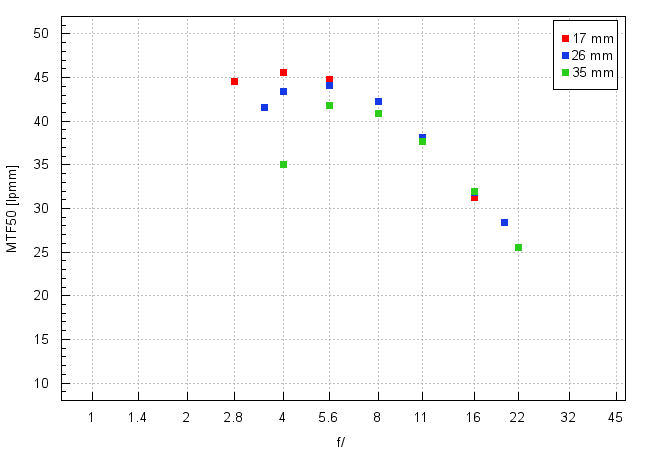
Please Support UsIf you enjoy our reviews and articles, and you want us to continue our work please, support our website by donating through PayPal. The funds are going to be used for paying our editorial team, renting servers, and equipping our testing studio; only that way we will be able to continue providing you interesting content for free. |
- - - - - - - - - - - - - - - - - - - - - - - - - - - - - - - - - - - - - - - - - - - - - - - -
The performance at 17 mm is simply sensational for a zoom lens offered for a very affordable price. Already from the maximum relative aperture you get very high MTFs, amounting to 44-45 lpmm. Additionally, you can improve that performance by stopping down the lens to f/4.0 and f/5.6.
In the middle of the focal range the situation is a bit worse but the results still remain brilliant. The maximum relative aperture provides you a level of almost 42 lpmm and on stopping down the aperture you are able to exceed 44 lpmm. There was a time when such a resolution level could be reached only by top-of-the-range fixed focal length lenses. Now it is available even for zoom lenses which don’t belong to the highest price point.
The weakest performance can be observed at the maximum focal length but even there it would be difficult to find any flaws as the lens is still an efficient tool. By f/4.0 it exceeds a level of 35 lpmm so the image quality is good. By f/5.6 – 8.0 the resolution lands above a high level of 40 lpmm so you can enjoy images of very good quality. As you see, in the frame centre the tested lens has no weak points.
Now let’s check how the Tamron 17–35 mm performs on the edge of the APS-C/DX sensor – an appropriate graph can be found below.
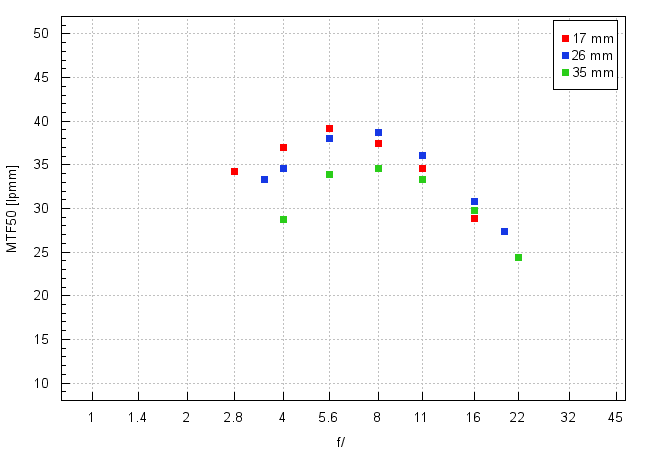
Once again the shortest focal length fares the best – even at the maximum relative aperture it is able to provide images of good quality. The 26 mm focal length is just slightly weaker, not giving any reasons to complain. In the case of the 35 mm focal length you can have slight reservations only when it comes to the maximum relative aperture; fortunately on stopping down to near f/4.5 all images become fully useful.
Of course the edge of full frame is the most demanding when it comes to lenses of this type. Let’s check now how the tested Tamron performs there.
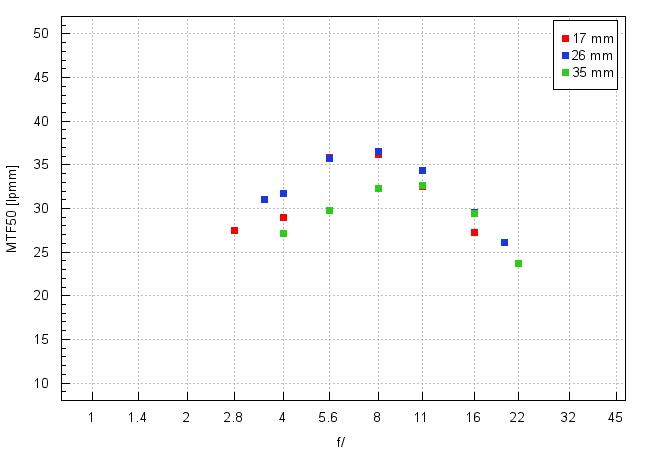
What’s interesting, the middle of the focal range is actually the best - even at the maximum relative aperture MTFs are able to exceed our decency level. The performance at 17 mm is the same as at 26 mm from f/5.6 upward. In the f/2.8- 4.0 range the results are lower, well below the decency level.
Once again the longest focal length fares the weakest but it should be emphasized that already from f/5.6 you can enjoy images of sensible quality.
When it comes to resolution the tested Tamron seems to be beyond reproach. Its results would be perfectly fine even if they belonged to a much more expensive lens. It’s enough to remind yourself the performance of the second version of the Canon EF 16-35 MM F/2.8L to see that, in this class of equipment, you can find much pricier and much weaker lenses.
At the end of this part of the test, traditionally, we present crops taken from photos of our resolution testing chart saved as JPEG files.
| Canon 5D MkIII, JPEG, 17 mm, f/4.0 |
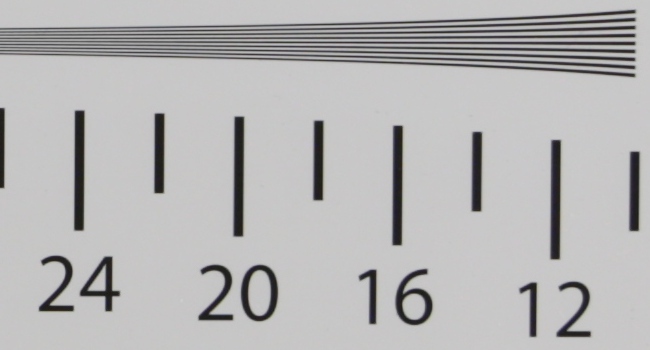 |
| Canon 5D MkIII, JPEG, 35 mm, f/4.0 |
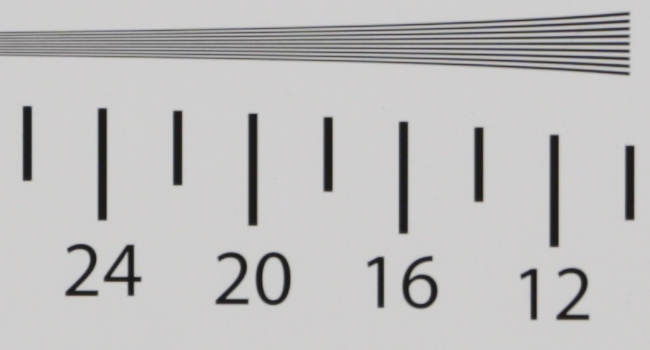 |






